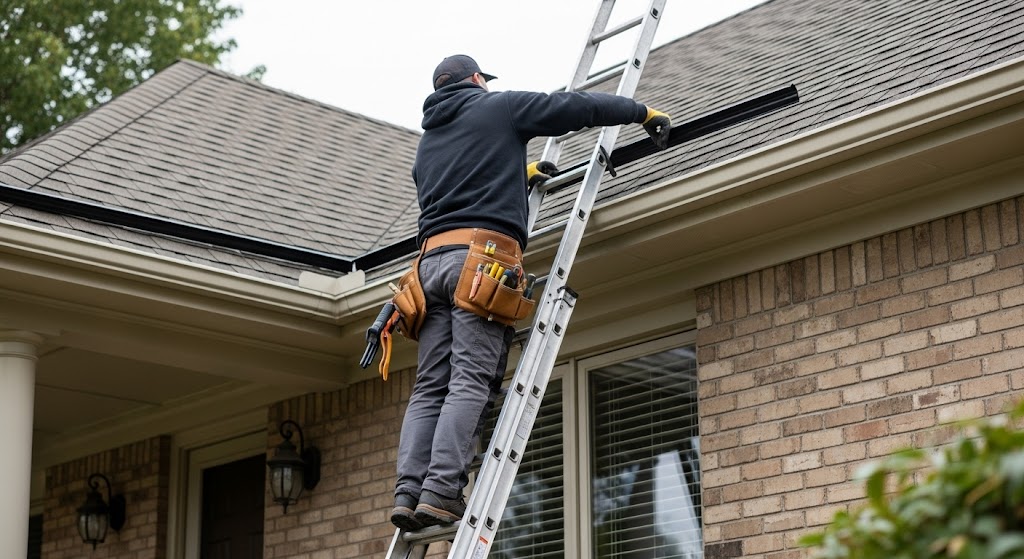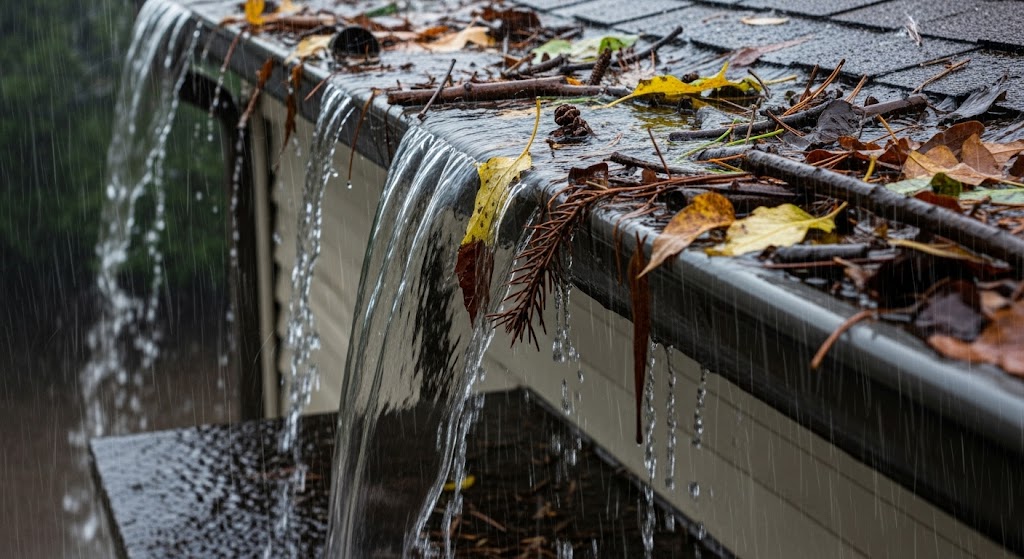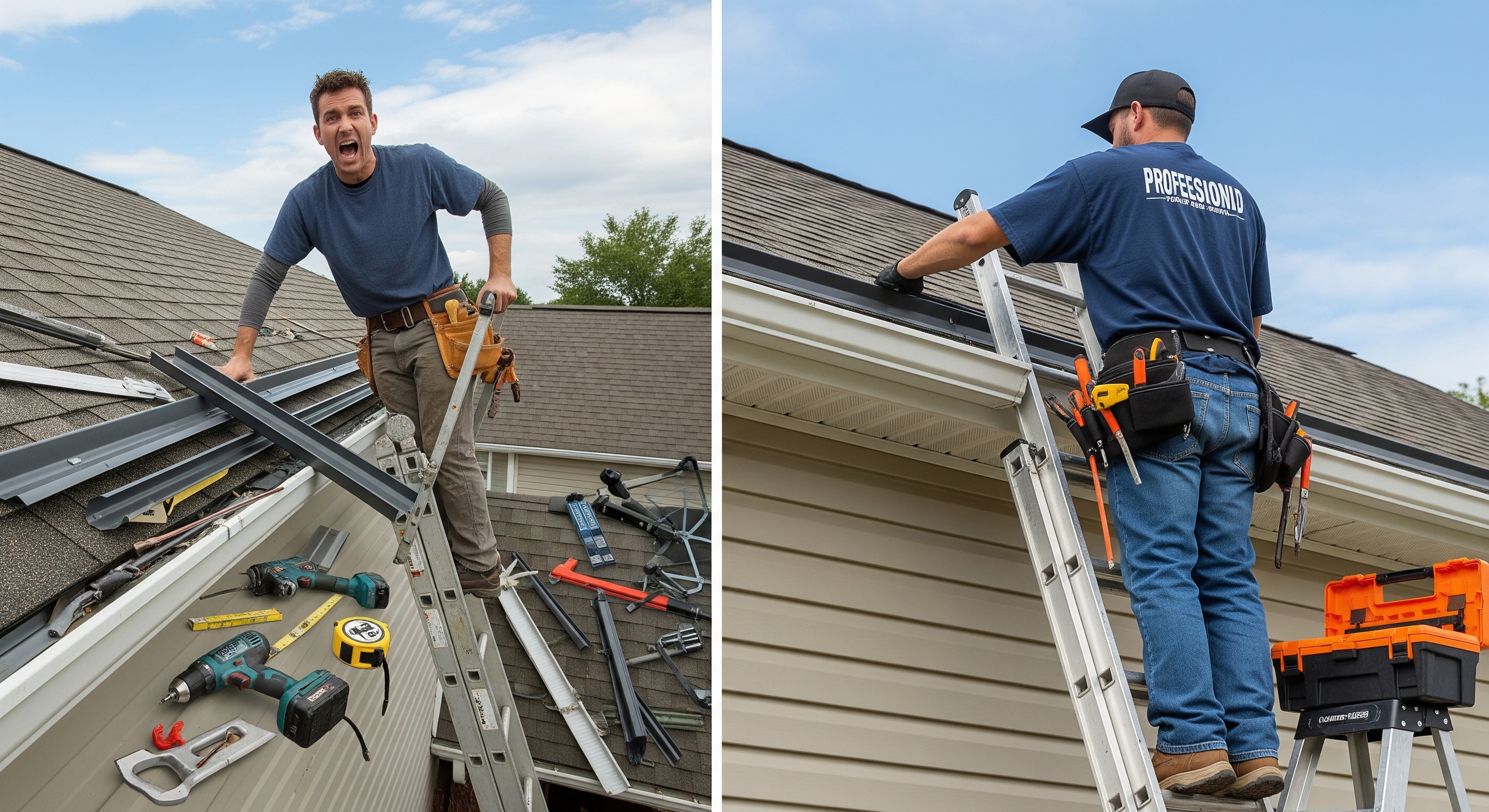
Hooded (Surface-Tension) vs Mesh Gutter Guards: 2025 Performance Showdown

As homeowners seek to protect their roofing investment, the showdown between hooded (surface-tension) and mesh gutter guards intensifies. Each design leverages distinct engineering one harnesses water adhesion, the other filters debris through fine openings. This analysis examines performance, materials, installation, and maintenance to guide informed decision-making.
What Defines Hooded (Surface-Tension) Gutter Guards
Hooded guards, often called reverse-curve systems, employ a curved metal or polymer hood that attaches over the existing gutter. Rainwater clings to the hood’s surface and flows beneath a narrow slot, while leaves and pine needles shed off the front edge. This design reduces gutter clogging by diverting debris away.
How Surface Tension Technology Works
Surface tension gutter guards rely on water’s natural adhesion to curved surfaces. As rainwater hits the hood, capillary action pulls it into the gutter slot. Debris slides off the smooth curve, minimizing build-up. In heavy downpours, the channel maintains capacity by directing large volumes swiftly.
Materials and Construction
Premium hooded systems are crafted from heavy-gauge aluminum or stainless steel, ensuring corrosion resistance and longevity. Powder-coated finishes coordinate with roofing shingles and fascia. Structural hangers secure the hood at an optimal angle, preserving roof warranties when installed by professionals.
Exploring Mesh Gutter Guards
Mesh guards feature a perforated screen—ranging from standard mesh to micro-mesh that rests atop the gutter. The micro-mesh variant boasts openings as small as 0.02 inches, blocking roof grit and tiny debris while allowing water infiltration. This filtration method effectively prevents most clogs.
Filtration Efficiency of Micro-Mesh
Micro-mesh gutter guards deliver superior debris exclusion, capturing shingle granules, pine needles, and seed pods. The fine weave supports steady water flow even in light rain, reducing overflow risk. Homeowners in regions with heavy foliage often prefer mesh for its minimal maintenance.
Durability and Material Options
High-performance mesh guards use surgical-grade stainless steel for rust resistance. Aluminum frames lend rigidity, while UV-stable polymer meshes offer a cost-effective alternative. DIY sections snap onto K-style or half-round gutters, though professional installation ensures uniform fit and seals.
Head-to-Head Performance Comparison
A side-by-side evaluation highlights each system’s strengths under real-world conditions.
Installation Considerations and Climate Suitability
Hooded guards excel in high-rainfall zones due to their capacity to shed large volumes quickly. Their reverse-curve design tackles roof runoff effectively but may overshoot on steep pitches. Mesh guards adapt to virtually any roof angle, filtering debris even in light rainfall regions. Installation should align with roof pitch, gutter style, and prevailing weather to maximize performance and preserve shingle warranties. Homeowners researching best gutter protection solutions often weigh climate data alongside system specifications.
Maintenance and Longevity in 2025 Conditions
Both systems prolong gutter lifespan and reduce cleaning intervals. Hooded systems may require occasional hood surface sweeping to clear moss or organic build-up in shaded areas. Mesh systems need periodic rinsing to remove microscopic particles caught in the weave. In coastal environments, stainless steel mesh resists salt-air corrosion, while powder-coated aluminum hoods maintain finish integrity. Proper cleaning tools—soft bristle brushes and low-pressure water—ensure longevity without damaging components.
Integrating Semantically Related Entities
When specifying a gutter guard, relevant entities include rain gutter profiles like K-style or half-round, roofing materials such as asphalt shingles, metal, or slate, and fastener options like self-tapping screws or structural hangers. Water management components downspouts, splash blocks, and rain chains—also play a critical role. The type of debris (e.g., pine needles, seed pods, or shingle grit) will influence the best guard solution. Installation decisions (DIY vs. hiring professional contractors), material grades (like 3000-series aluminum or 304 stainless steel), and local environmental conditions such as UV exposure, snowfall, or dense tree coverage—must also be factored in. For a breakdown of the most common systems, explore our in-depth guide on the different types of gutter guards.
A homeowner in a pine-heavy environment might choose a micro-mesh stainless steel screen to block needles, while another in a torrential-rain region may favor a seamless aluminum reverse-curve system paired with oversized downspouts. Evaluating these entities in relation to roof pitch, gutter capacity, and debris forecasts drives optimal selection.
Why Choose Professional Gutter Protection
Engaging experts ensures precise hood placement or seamless mesh alignment. Professional installers follow roof pitch specifications and preserve roofing warranties. They often bundle gutter guard installation with home defender USA inspections, offering custom fabrications that avoid retrofit gaps. Warranty enforcement and service guarantees hinge on correct installation methods and adherence to manufacturer guidelines.
Beyond Clogging: Benefits of Comprehensive Gutter Solutions
Readers interested in system advantages can explore Benefits Gutter Guards, which outlines reduced water damage, minimized pest infiltration, and extended gutter and fascia lifespan. Quality gutter protection acts as a proactive water management strategy, safeguarding foundations, landscaping, and exterior finishes from overflow-induced erosion.
Ready to Upgrade? Connect Today
To discuss tailored gutter guard solutions, request a free estimate, or schedule an inspection, reach out via Contact us. Professional guidance streamlines product selection and installation, ensuring peak performance in 2025 and beyond.
Home Defender USA provides this service.
Frequently Asked Questions
What is the primary difference between hooded and mesh gutter guards?
Hooded guards use reverse-curve geometry to divert debris and rely on surface tension to channel water, while mesh guards employ perforated screens to filter out even the smallest particles before they enter the gutter.
Can homeowners install gutter guards themselves?
Mesh systems designed for DIY users allow homeowners to snap sections onto gutters. Hooded systems typically require professional installation to maintain precise angles and seal integrity, especially to preserve roof warranties.
Which system handles heavy rainfall more effectively?
Hooded (surface-tension) models excel in heavy rain by rapidly shedding water over the curved hood and into the gutter slot. High-density micro-mesh can also perform well but may face slight flow reduction if surface particles accumulate.
How do mesh guards perform with pine needles and roof grit?
Micro-mesh guards block fine debris like pine needles, shingle granules, and seed pods due to their ultra-fine openings. Standard mesh screens may allow smaller particles to pass through and require more frequent cleaning.
What maintenance do gutter guards require in coastal areas?
Coastal homes should choose stainless steel or powder-coated aluminum resistive of salt air. Routine rinsing removes salt and organic buildup. Hooded systems need occasional hood surface inspections, while mesh systems benefit from periodic brushing of the screen surface.















.jpg)










